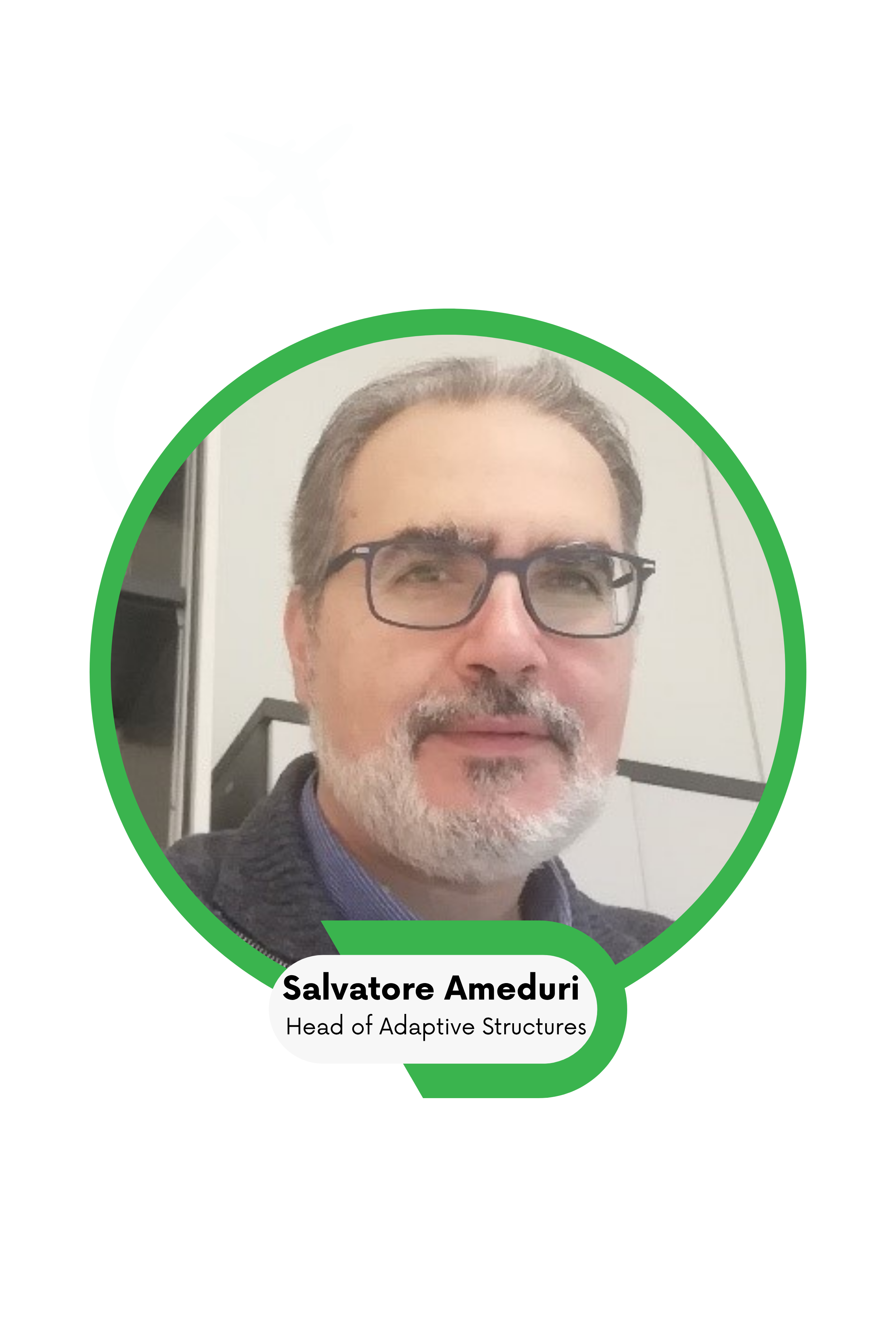Personal Information
- Name: Salvatore Ameduri
- Position/Title: Head of the Adaptive Structures Operative Unit of CIRA/ Dr.
- Department: Aeronautic Division
Professional Background
Briefly describe your professional background and area of expertise:
After defending its PhD Thesis in the field of the Adaptive Structures, he was hired at CIRA in 2002 playing different roles in terms of project management and technical coordination, definition, design, optimization and testing of structural demonstrators and prototypes of adaptive systems (morphing, structural health monitoring, noise and vibration active control, low power ice protection systems).
What inspired you to pursue a career in this related field, e.g., aviation, carbon-free emissions etc?:
The mitigation of the environmental impact of the aircraft represents an important element in my activity; this target is pursued following different strategies and implementing different types of technologies; in the case of the Project of H2ELIOS, the structural health monitoring branch is investigated to guarantee the adequate level of safety to the hydrogen tank.
Role in H2ELIOS
What is your role in the H2ELIOS project?:
I’m the focal point for the activities of CIRA within the Project.
Can you describe your main responsibilities and tasks?:
CIRA addresses two different activities: one is represented by the monitoring of the hydrogen tank and the other one is constituted by the development of dedicated additive manufacturing shock absorber systems to assure an advanced crashworthiness level.
How does your work contribute to the overall goals of the H2ELIOS project?:
The work of CIRA contributes to the overall goals of the H2ELIOS project in terms of safety of the final product, both for the early detection of possible cracks of the hydrogen tank and for the enhancement of its capability of absorbing crash events.
CIRA contributes to the overall goals of the H2ELIOS project in terms of safety of the final product, both for the early detection of possible cracks of the hydrogen tank and for the enhancement of its capability of absorbing crash events.
Project Insights
What do you find most exciting about working on the H2ELIOS project?:
The teamworking with international experts on the field.
What has been the most challenging aspect of your work on this project?:
The problem itself is challenging from several points of view, especially for the safety aspects.
Can you share a significant milestone or achievement your team has reached so far?:
Definition a of a combined monitoring system able to early detect cracks and to assure a constant monitoring of the tank structure; another important aspect is constituted by the definition of dedicated shock absorber, whose additive manufacturing structure has been optimized for this specific pplication.
We defined a combined monitoring system able to early detect cracks and to assure a constant monitoring of the tank structure, alongside an optimized additive-manufactured shock absorber for crashworthiness.
Personal Experience
What have you learned during your time working on H2ELIOS?:
The integration aspects within a cryogenic components is challenging and many specific requirements must be met.
How has this project influenced your professional development?:
For its nature this Project enforced a multidisciplinary approach that implies the capability of framing problems from different prospectives.
This project enforced a multidisciplinary approach that implies the capability of framing problems from different perspectives.
Fun Facts
What do you enjoy doing in your free time?:
Having trip with my family.
Closing Thoughts
Is there anything else you would like to share about your experience with the H2ELIOS project?:
Importance of teamworking.
